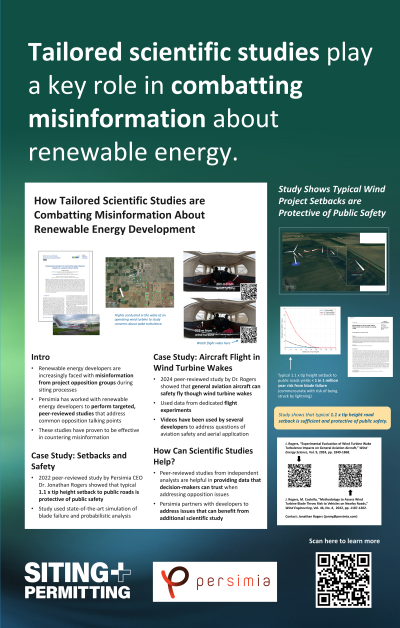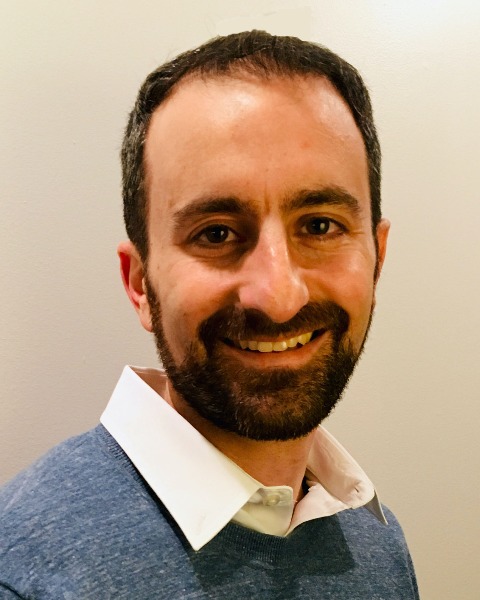Using Tailored Scientific Studies to Push Back Against Disinformation About Renewable Energy Development


Jonathan Rogers (he/him/his)
CEO
Persimia, LLC
Marietta, Georgia
Poster Presenter(s)
Renewable energy developers are having to combat disinformation from increasingly organized opposition groups. Oftentimes, this takes the form of pseudo-technical information that is pulled from the internet and presented to permitting authorities as evidence that (for instance) setbacks are too short or renewable energy development will be detrimental to the community. As a common example, opposition groups routinely cite ice throw or blade throw risk as justification for exclusionary setbacks, producing anecdotal evidence or data from literature that is often taken out of context. Another example opposition groups have cited is the supposed risk to general aviation aircraft posed by wind turbine wake turbulence. Oftentimes, decision-makers do not have the expertise to assess the engineering validity of the information provided.
Recently, Persimia has worked with several wind developers to perform scientific studies that push back against disinformation about the safety risks posed by wind turbines. In one study, we showed that typical 1.1 times tip height setback to public roads provides a very high level of protection against the risk of blade failure. In more recent work, we analyzed an actual blade failure that occurred due to a lightning strike, and showed using engineering models that small blade pieces blown outside the setback distance were too small and lightweight to harm anyone. In a third example, we worked with a developer to perform test flights near wind turbines to verify that the turbulence in the wake is minor and safe for light aircraft. The common theme of this work is that the results are published in open literature and are available as tools for the industry to use to counteract disinformation. This talk will discuss the strategy of using scientific studies to counteract disinformation and will provide examples where these studies have produced positive outcomes for the industry.
